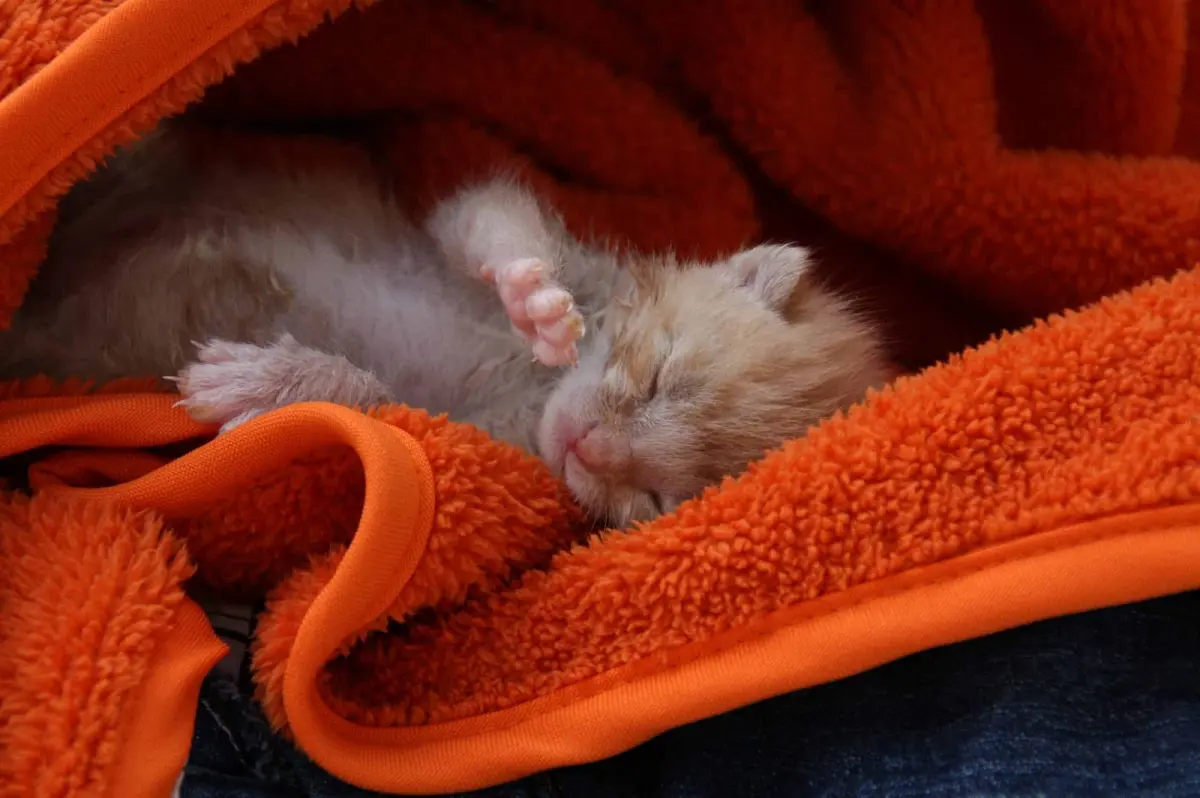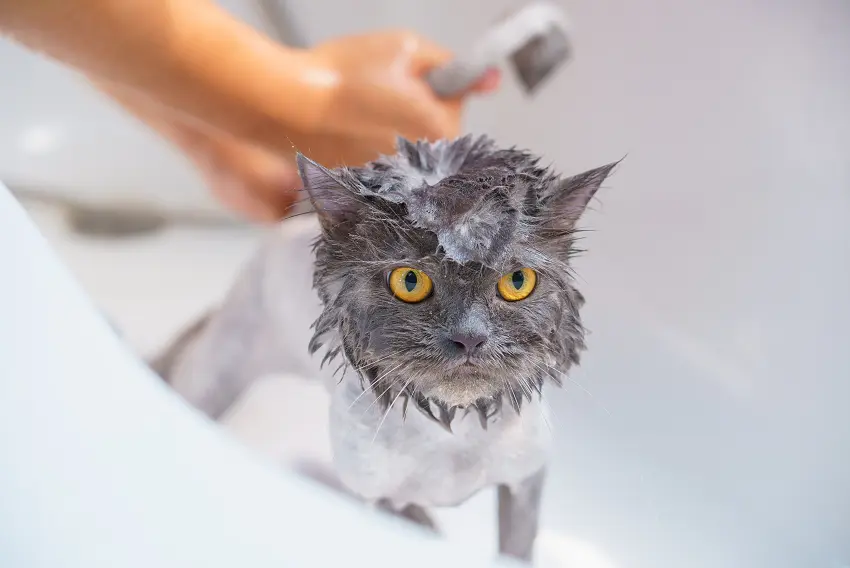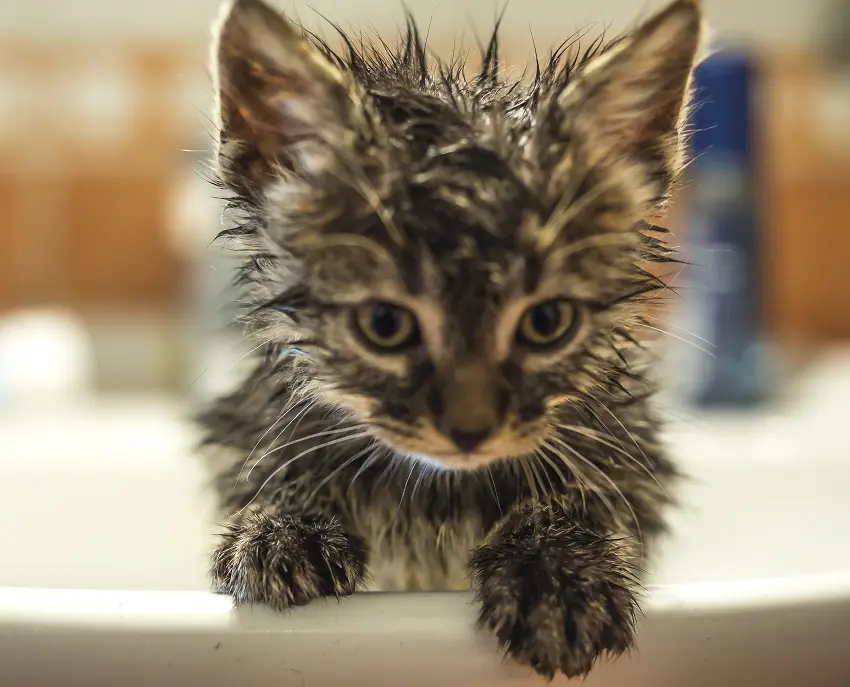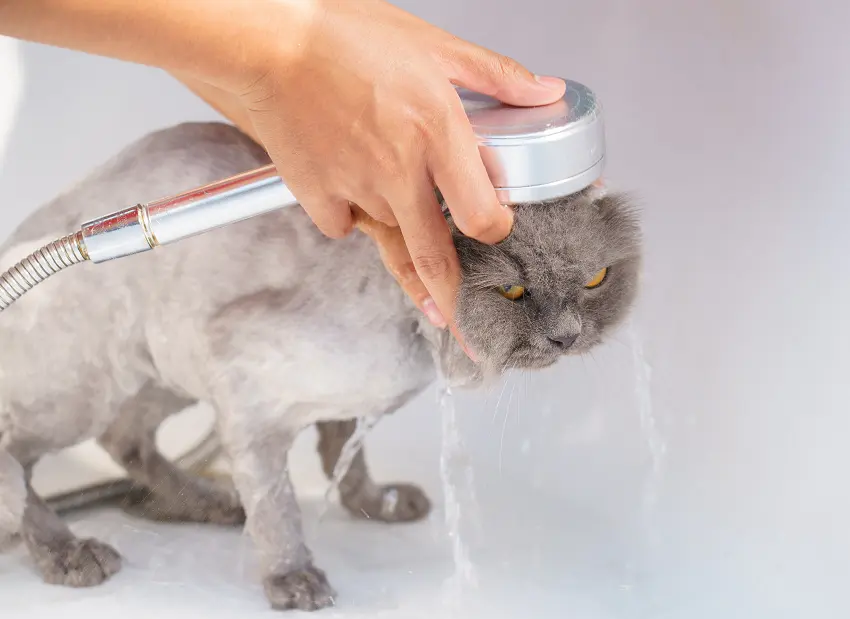How To Give A Kitten A Bath? | 7 Easy Steps
One of our responsibilities as pet owners is to ensure that our cats are clean and well-groomed. This will prevent problems like coat matting, skin parasites, and so on. The process of how to give a kitten a bath is easy with enough practice and guidance. In this post, I will provide tips so you can provide baths to your kitten safely.
At what age can you bathe a kitten?
It would be best if you only gave a kitten its first bath once it reaches eight weeks old. Bathing kittens that are under eight weeks isn’t advisable because they can’t thermo-regulate on their own just yet. If your kitten is less than eight weeks, let the mother cat do the grooming for the meantime.

Also, never give your kitten frequent baths because it will dry its skin. On average, kittens only need a bath every six weeks. Also, sick kittens should never be given a bath unless the vet gives it a go. Besides, you’re supposed to keep a young kitten indoors so it will not get as dirty as older, wandering felines.
How to give a kitten a bath?

Not all cats are fond of baths, but some breeds like Bengal love playing in the water. In this case, you need to prepare first. Take note that you should never use human shampoo on your kitten, or any cat for that matter.
Being a responsible pet owner, you should know how often should you bathe a cat.
Below, I discussed a step-by-step guide together with the things you need.
Step 1. Prepare for the bath
Before you bathe the kitten, get some washcloths and a microfiber towel for drying. You should also purchase a cat shampoo made specifically for cats and kittens. Never use human shampoo or soap for cats because it will cause irritation and potential skin problems.
Step 2. Fill a small pan with water
Next, get a small pan or similar container and fill it with water. Let your kitten stand there so that it will get used to the water. Take note that you shouldn’t use cold water. Lukewarm is best – not too hot and not too warm. I recommend luring the kitten with a treat so that it will walk into the pan on its own.
Step 3. Start bathing the kitten
To start bathing your kitten, wet the washcloth and wipe it gently all over its body. Expect that your kitten will try to get away and claw you. To make bath time more attractive, give some tasty treats. Positive reinforcement will also go a long way here.
Step 4. Start drizzling
While your kitten stands on the pan, drizzle its body with water while avoiding its face. You should never pour water directly onto your kitten’s face because it will make the feline anxious.
Go slow and don’t force your kitten to stay in place. If your kitten is getting anxious, try giving it some treats. Vets can also prescribe a pheromone or sedative that will help the kitten relax during a bath.
Step 5. Apply the shampoo
Once your kitten’s coat is wet, apply a small amount of kitten shampoo. A pea-sized amount will do if it’s your kitten’s first time taking a bath. Again, never apply the shampoo to your feline’s face. This will dry up its nose, which can be painful and irritating.
Some shampoos need to be left in the coat for a few moments. If you’re using a medicated or flea shampoo, you should let it soak on your kitten’s coat for at least 15 minutes.
Step 6. Rinse
After that, rinse your cat’s coat by drizzling water all over its body. You can also use a wet washcloth to wipe hard-to-reach areas. It would help if you bathed your kitten fast so it won’t suffer from chills. Everything should be finished in 15 to 20 minutes. The quicker you can wash the kitty, the better. Still, be gentle with the little feline’s body.
Step 7. Dry
While kittens can groom themselves, you should assist by drying their small bodies with a clean towel. It would be best if you used a microfiber towel so your kitten’s claws won’t snag on the cloth.
Wrap the kitten in a towel and pat it dry. For kittens with long hair, you can use a hairdryer with the lowest heat and speed setting.
Aside from drying, it would be best if you also brush your kitten’s coat. Those with long fur need gentle untangling to prevent matted hair. Use a soft brush and glide it gently and slowly on your kitten’s fur.
Tips for bathing a kitten

Bathing a kitten can be a difficult task. To make things more bearable, I recommend these additional tips:
- Ask someone to help. A kitten can be difficult to handle, so don’t hesitate to ask someone to help you out. For my kitten Watson, I always have my wife helping me out so we can finish bathing fast. You can also ask a friend who has experience bathing a kitten before.
- Scruffing will help. Scruffing is holding the kitten on the skin at the back of its head. This hold will calm a kitten and stop them from moving around. However, make sure that you support the kitten’s rear while you hold it on the scruff. Also, watch out for some squirming and clawing.
- Dry the kitten as fast as you can. After bathing, it’s essential to dry the kitten as soon as you can. Kittens can quickly get chilly, and it’s not safe for them.
- Avoid scented shampoos. Cats have very sensitive sniffers, and they can easily be irritated by various fragrances. Besides, your cat won’t appreciate the scent. The add-on scent of the shampoo may potentially irritate the skin.
- Clip the claws. One mistake I’ve done in the past is giving my cat Watson a bath without trimming its claws first. As you know, kittens are not fond of baths, and they will use their claws to make it known. So for your kitten’s first bath, do yourself a favor and clip those claws beforehand.
- Use a rubber mat. Whether you’re bathing your kitten on a pan, sink, or bathtub, place a rubber mat on top of it. This way, your kitten can stand firm. It will reduce anxiety while making things easy for you as well.
- Wipe the face. Remember that you’re not supposed to douse water on your kitten’s face. What you can do is use a wet washcloth to wipe away any tear stains and muck.
- Use treats. Treats also work their magic with cats. After a bath, give your kitten some tasty treats as a reward. This will train your feline to cooperate on succeeding baths because it gets something out of it.
- When giving a bath to your cat, you can come across some unplanned troubles like cat pooping in tub. So, make sure you are prepared for everything before you start giving a bath.
Should I bathe my cat after adoption?

There has been a misconception that since cats are natural groomers, there’s no need for them to take a bath. While this is true in the wild, domesticated cats need some help to remove dirt from their bodies.
For newly adopted cats, it’s an excellent decision to bathe them once you brought them home. However, I suggest letting the feline adjust to the new place first before the bath. This is to prevent intense stress.
In the meantime, separate the new cat from your other pets so it wouldn’t spread any potential germ of infection. The next day, you can bathe the kitty while giving lots of treats. You can also ask the vet about what to do so your kitty will remain safe in its first bath.
Remember that your main enemy is your kitten’s fright. As much as possible, you should keep bath time relaxing for your pet.
Conclusion
By knowing how to give a kitten a bath, you will have an easier time raising your feline and it also helps you keep your cat clean.
Don’t hesitate to ask for help from your friends or your kitten’s veterinarian. Remember to go slow and gentle so your kitty won’t be stressed. Use treats to keep your cat relaxed and use cat products only. The use of human products can harm your cat’s skin. Also, don’t over-bathe your kitten because it’s susceptible to pneumonia and other complications.
I hope the information from this article will help you take better care of your cat. Thank you for reading!
